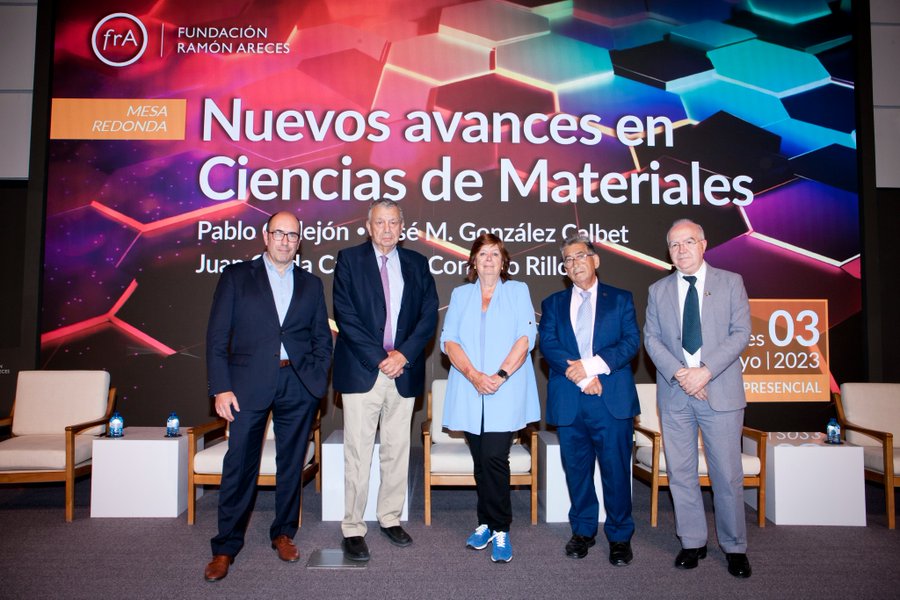A roundtable discussion on advanced materials for facing current and future technological challenges was organised by the Fundación Ramón Areces. ICN2 Director and Group Leader Prof. Pablo Ordejón was one of the four invited experts.

Exciting developments in materials science have the potential to solve some of the most pressing societal challenges of our time. From routine diagnostic tests to the development of vaccines and more sustainable energy sources, the key to unlocking these solutions may lie in the development of advanced materials.
Four renowned researchers in the field –Prof. Pablo Ordejón, ICN2 Director and Group Leader, Trustee of BIST, Prof. José M. González Calbet, Director of the Singular Scientific and Technical Installation ELECMI National Centre for Electron Microscopy of UCM, Prof. Juan Carda Castelló, Director of the Chair of Ceramic Innovation of the Jaume I University of Castellón, and Prof. Conrado Rillo, Director of the Institute of Nanoscience and Materials of Aragon (CSIC-University of Zaragoza) – recently shared the latest advances in this field at a roundtable discussion hosted by the Ramón Areces Foundation. The event was held in Madrid on 3 May, 2023.
According to the experts, materials with superior properties compared to existing technologies can help implement cleaner and more sustainable solutions while requiring fewer resources. These advanced materials are also more environmentally friendly and economically competitive. The roundtable, moderated by Prof. María Vallet Regí, a member of the Life Sciences Council and of the European Commission, highlighted the importance of continuing research in materials science to address issues that our society is facing today.
In particular, advanced materials have the potential to revolutionize the medical field by enabling routine diagnostic tests and the development of new vaccines. They can also play a critical role in the development of sustainable energy sources, which are key to combating climate change and reducing carbon emissions. Quantum computing is another area where materials science is making significant strides. By developing materials with advanced properties, scientists are working towards creating more efficient and powerful quantum computers that could revolutionize industries such as finance, cryptography, and medicine.
The Ramón Areces Foundation's roundtable provided a valuable platform for these expert researchers not only to discuss the latest advances in materials science, but also to share their vision about the future of this field and the many applications of advanced materials.
Prof Pablo Ordejón explained that there are currently two trends in Materials Science, nanomaterials and quantum materials, which are providing possible solutions to some of these challenges. "On the one hand, we are already able to design and manufacture materials whose properties we can change at will by modifying the size and shape of the structures that make up the material at the nanometric scale. Nanoscience allows us to modify materials at such small scales, and to make devices of tiny sizes with extraordinary functionalities. In health, these advances have been instrumental in developing, for example, the Covid-19 vaccine, which uses nanoparticles to encapsulate and protect the mRNA so that it reaches our cells intact. Countless new materials and devices are also being developed for applications in sustainable energy generation and storage (batteries, photovoltaic devices), and for information technologies (faster devices, with more memory storage and drastically lower energy costs)," he stated.
About the so-called 'quantum materials', Prof Ordejón added that "they present extraordinary functionalities due to the fact that the microscopic quantum behaviour of the nuclei and electrons that form them is manifested at macroscopic scales. Superconductivity is the most typical example of this class of materials, but there are currently many more, which offer an extraordinary potential for applications, from the manufacture of quantum computers (potentially much more powerful than the classic computers we use today), to electronic devices with minimal energy consumption."


